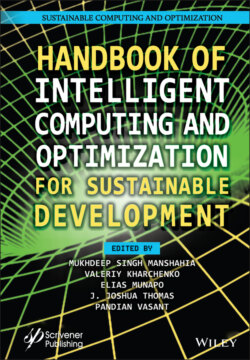Читать книгу Handbook of Intelligent Computing and Optimization for Sustainable Development - Группа авторов - Страница 34
References
Оглавление1. Sweller, J., Van Merrienboer, J.J.G., Paas, F.G., Cognitive architecture and instructional design. Educ. Psychol. Rev., 10, 3, 251–296, 1998.
2. Others and Borghini, G., Aricò, P., Di Flumeri, G., Cartocci, G., Colosimo, A., Bonelli, S., Golfetti, A., Imbert, J.P., Granger, G., Benhacene, R., EEG-based cognitive control behaviour assessment: an ecological study with professional air traffic controllers. Sci. Rep., 7, 1, 1–16, 2017.
3. Wang, S., Gwizdka, J., Chaovalitwongse, W.A., Using wireless EEG signals to assess memory workload in the $ n $-back task. IEEE Trans. Hum-Mach Syst., 46, 3, 424–435, 2015.
4. Zhong, Y. and Zhang, J., Identification of temporal variations in mental workload using locallylinear-embedding-based EEG feature reduction and support-vector-machine-based clustering and classification techniques. Comput. Methods Programs Biomed., 115, 3, 119–134, 2014.
5. Li, X., Chen, Z., Liang, Q., Yang, Y., Analysis of mental stress recognition and rating based on hidden Markov model. J. Comput. Inf. Syst., 10, 18, 7911–7919, 2014.
6. Penaranda, B.N. and Baldwin, C.L., Temporal factors of eeg and artificial neural network classifiers of mental workload, in: Proceedings of the Human Factors and Ergonomics Society Annual Meeting, pp. 188–192, 2012.
7. Palinko, O., Kun, A.L., Shyrokov, A., Heeman, P., Estimating cognitive load using remote eye tracking in a driving simulator, in: Proceedings of the 2010 symposium on eye-tracking research \& applications, pp. 141–144, 2010.
8. Krejtz, K., Duchowski, A.T., Niedzielska, A., Biele, C., Krejtz, I., Eye tracking cognitive load using pupil diameter and microsaccades with fixed gaze. PLoS One, 13, 9, 1–23, 2018.
1 *Corresponding author: rndas9@gmail.com
